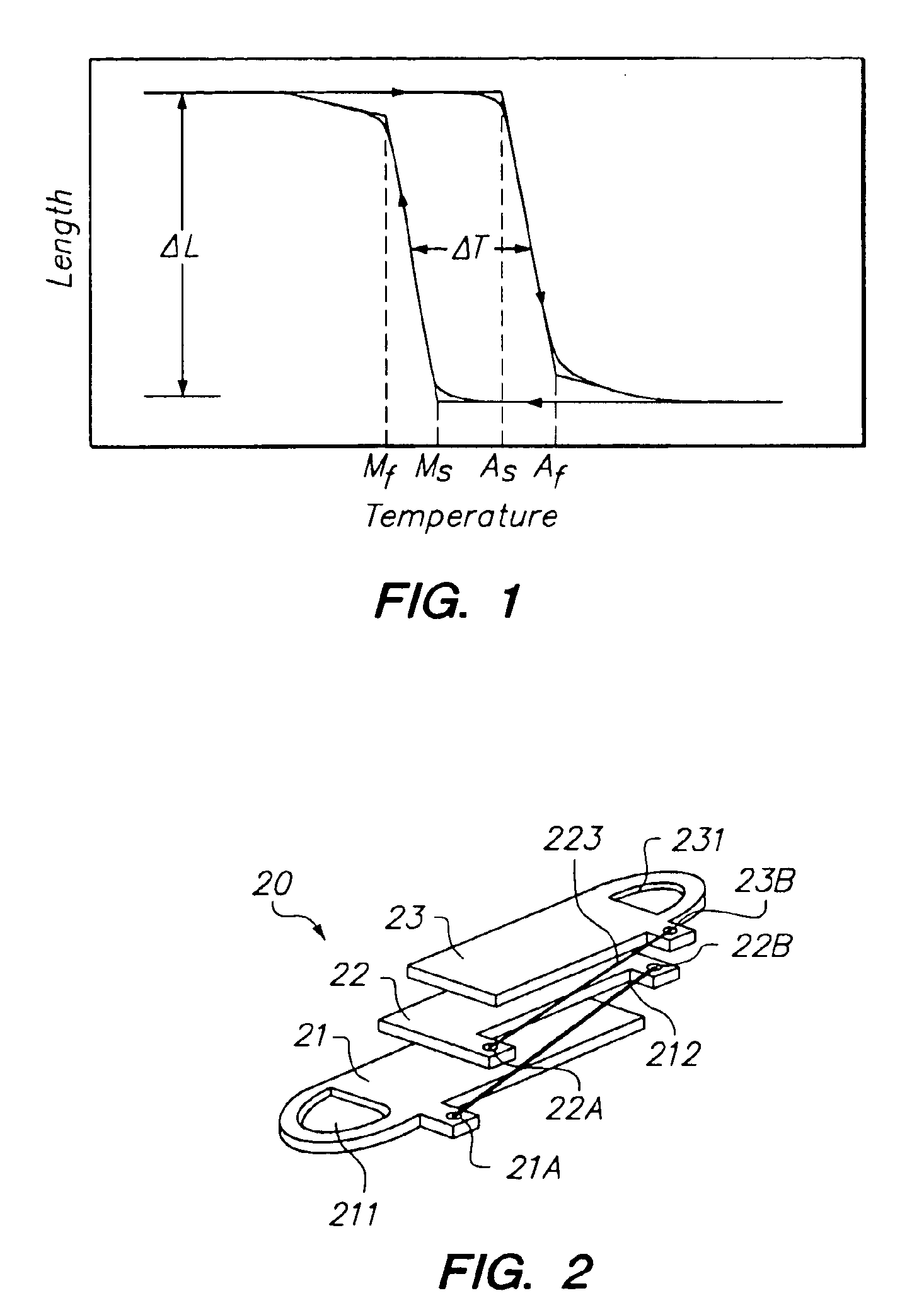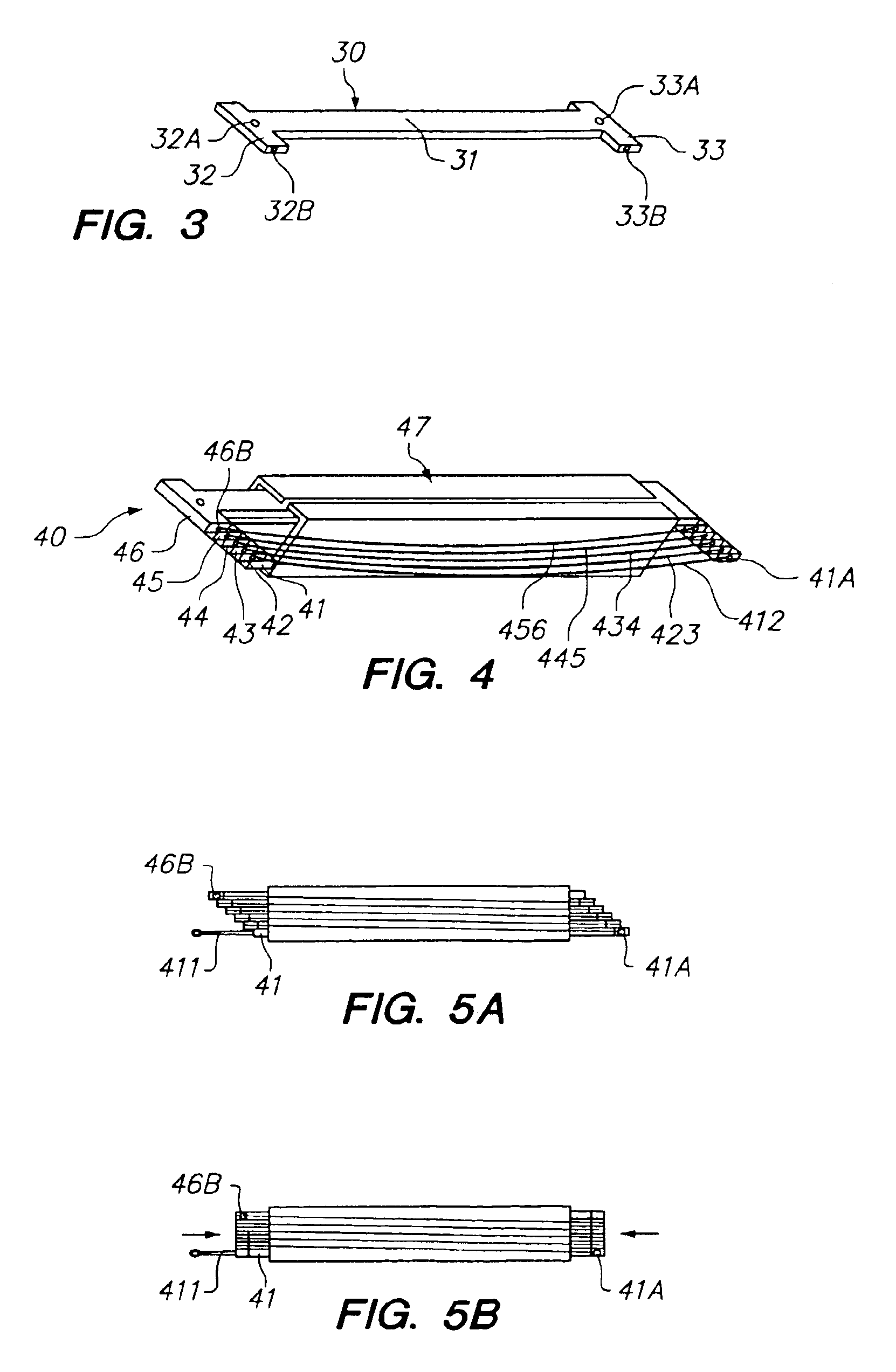SMA actuator with improved temperature control
a technology of sma wire and temperature control, which is applied in the direction of mechanical equipment, hot gas positive displacement engine plants, electric devices, etc., can solve the problems of limited commercial actuator applications, short cycle life, and damage to sma wires, and achieves faster response, shorter cycle time, and greater cooling of sma wires
- Summary
- Abstract
- Description
- Claims
- Application Information
AI Technical Summary
Benefits of technology
Problems solved by technology
Method used
Image
Examples
example
A Miniature Stroke Multiplying Actuator
[0069]FIG. 9 shows in exploded view the assembly, shown generally at 91, of the plates and wires of this embodiment, and the frame 92 onto which the plates are assembled. These plates will be stacked into a parallel array on the frame, with plate 911 being the lowest, followed in succession by plates 912 through 916, and topped by plate 917. Each plate is made of a material that is rigid yet soft enough to permit crimping of the material onto the SMA wires 921 through 926 at crimp joints 911A and 912B through 916A and 917B respectively without damaging the wires (excessive compression of the SMA wires causes fragility and change in transition properties). A suitable material for the plates is a half hard cartridge brass, or a half hard “nickel silver” alloy. Other methods of attachment of the wires may be used, but crimping is an attractive method for ease, economy, and not increasing the size of the assembled actuator. Lowermost plate 911, whi...
PUM
| Property | Measurement | Unit |
|---|---|---|
| Length | aaaaa | aaaaa |
| Fraction | aaaaa | aaaaa |
| Fraction | aaaaa | aaaaa |
Abstract
Description
Claims
Application Information
 Login to View More
Login to View More - R&D
- Intellectual Property
- Life Sciences
- Materials
- Tech Scout
- Unparalleled Data Quality
- Higher Quality Content
- 60% Fewer Hallucinations
Browse by: Latest US Patents, China's latest patents, Technical Efficacy Thesaurus, Application Domain, Technology Topic, Popular Technical Reports.
© 2025 PatSnap. All rights reserved.Legal|Privacy policy|Modern Slavery Act Transparency Statement|Sitemap|About US| Contact US: help@patsnap.com



